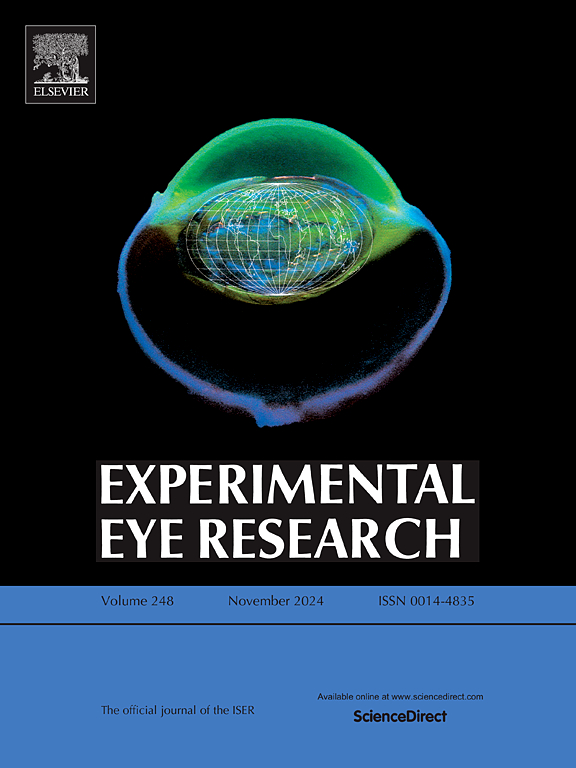Single-cell transcriptomic profiling of rat iridocorneal angle at perinatal stages: Revisiting the development of periocular mesenchyme
IF 3
2区 医学
Q1 OPHTHALMOLOGY
引用次数: 0
Abstract
The periocular mesenchyme (POM) gives rise to key structures in the ocular anterior segment, and its malformation leads to anterior segment dysgenesis (ASD) with iridocorneal angle (ICA) abnormalities. However, the transcriptional profile of the POM and the regulatory mechanisms governing cell-fate decision during anterior eye and ICA development remain poorly understood. In this study, we performed a comprehensive time-series analysis by sequencing rat anterior ocular samples collected at five consecutive perinatal stages: embryonic days 16.5 and 18.5, the day of birth, and postnatal days 4 and 8, at the single-cell level and validated a portion of in silico findings with immunostaining. High-quality transcriptomes were obtained from 59,416 cells with diverse embryonic origins. A prominent transcriptional shift was observed in POM cells, coinciding with anatomical alterations around the ICA shortly after birth. We illustrated the molecular signatures of five POM subclusters while tracing their developmental trajectories. Additionally, we identified key driver genes, as well as cell type-specific and stage-wise gene modules underlying lineage specification. Furthermore, the switch of regulon network and cellular crosstalk associated with POM maturation were unveiled. Lastly, we mapped ASD-relevant genes to this single-cell atlas, revealing distinct expression patterns. Collectively, this study provides a transcriptomic blueprint for understanding normal POM and ICA development, as well as a valuable reference for future research into ASD pathogenesis.
求助全文
约1分钟内获得全文
求助全文
来源期刊

Experimental eye research
医学-眼科学
CiteScore
6.80
自引率
5.90%
发文量
323
审稿时长
66 days
期刊介绍:
The primary goal of Experimental Eye Research is to publish original research papers on all aspects of experimental biology of the eye and ocular tissues that seek to define the mechanisms of normal function and/or disease. Studies of ocular tissues that encompass the disciplines of cell biology, developmental biology, genetics, molecular biology, physiology, biochemistry, biophysics, immunology or microbiology are most welcomed. Manuscripts that are purely clinical or in a surgical area of ophthalmology are not appropriate for submission to Experimental Eye Research and if received will be returned without review.
 求助内容:
求助内容: 应助结果提醒方式:
应助结果提醒方式:


